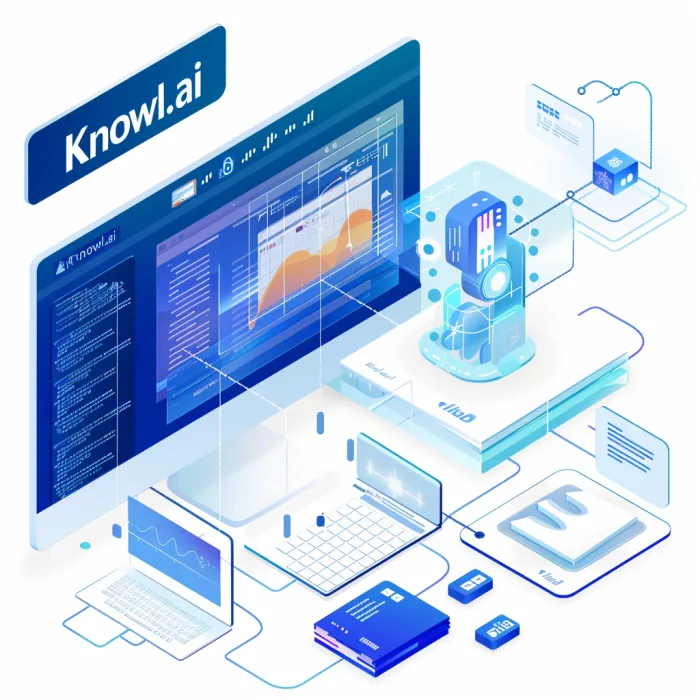In the digital age, APIs (Application Programming Interfaces) serve as the backbone of software development, enabling a new era of innovation and connectivity. As we step into 2024, the significance of APIs in crafting seamless, efficient, and dynamic applications has never been more pronounced. This guide delves into the essence of APIs, their operational mechanisms, and their pivotal role in modern web development, highlighting some of the most popular APIs that are shaping the future of technology.
What Are APIs and How Do They Work?
Understanding the Basics of APIs
APIs are the unseen heroes of the digital world, acting as intermediaries that allow different software applications to communicate with each other. Imagine ordering a coffee through a mobile app; the API is the messenger that takes your request to the server and then brings your coffee order back to you. It's a set of rules and protocols that defines how applications interact, making data exchange streamlined and secure.
Key Takeaway: APIs are essential for enabling the functionality we've come to rely on across web and mobile applications, making them indispensable in today's interconnected world.
How Do Developers Use APIs in Their Projects?
Developers use APIs to extend the capabilities of their applications without having to build new functionality from scratch. Whether it's integrating real-time weather updates, processing payments, or adding map functionalities, APIs provide a plethora of services that developers can incorporate into their projects. By leveraging APIs, developers can save time, reduce complexity, and enhance the user experience.
Key Takeaway: APIs empower developers to build more complex, feature-rich applications efficiently by tapping into external services and data.
The Role of REST APIs in Modern Web Development
REST (Representational State Transfer) APIs have become the standard for designing networked applications. They use HTTP requests to perform CRUD (Create, Read, Update, Delete) operations, making them highly flexible and adaptable to web development needs. REST APIs are favored for their simplicity, statelessness, and ability to scale, facilitating communication between client and server in a structured manner.
Key Takeaway: REST APIs streamline the development process by utilizing the familiar HTTP protocol, offering a robust and intuitive framework for data exchange.

Zooming In: The Titans of the API World in 2024
The landscape of popular APIs is ever-evolving, with services aiming to cater to the diverse needs of developers and businesses alike. Here are some standout APIs that have captured the attention of the developer community in 2024:
Google Maps API: Continues to dominate by offering detailed maps, geolocation, and route planning capabilities, enhancing apps with spatial data and interactive features.
Twitter API: Provides access to real-time social media data, allowing developers to integrate Twitter feeds, analyze trends, and engage with the platform's vast network.
Weather API: Offers real-time weather data, forecasts, and historical weather information, essential for applications requiring accurate environmental insights.
YouTube API: Enables seamless integration of video content, channel management, and analytics, enriching applications with multimedia functionalities.
Fun Fact
Did you know that the concept of APIs predates the internet? APIs have been a fundamental part of computer science since the early days of programming, facilitating the modular design and interoperability of software components.
Why Are Popular APIs Essential for Developers?
Exploring the Benefits of Using Popular APIs
Popular APIs serve as building blocks for developing applications, offering pre-built functionality that can significantly reduce development time and costs. By tapping into established services like Google Maps for location services, PayPal for payment processing, or social media APIs for enhanced user engagement, developers can focus on their application's unique features rather than reinventing the wheel.
Key Takeaway: Utilizing popular APIs accelerates development, ensures reliability, and enhances user experience, making them invaluable assets in a developer's toolkit.
How APIs Allow Developers to Access Data Efficiently
APIs act as gateways, enabling developers to access vast amounts of data from external sources with minimal effort. Whether it’s fetching real-time weather data, accessing user geolocation, or pulling social media content, APIs provide a standardized way to retrieve this information, making data integration seamless and straightforward.
Key Takeaway: APIs simplify the process of data access and integration, allowing developers to enhance their applications with diverse, real-time data without the complexity of direct data management.
Integrating Popular APIs into Your Applications
Integrating popular APIs into applications is a straightforward process, thanks to comprehensive documentation and developer support provided by API providers. From the initial setup, which often involves registering for an API key, to making API calls from your application, each step is designed to be developer-friendly. Adopting best practices such as using proper authentication methods, handling API rate limits, and ensuring data privacy can further streamline integration and enhance application performance.
Key Takeaway: With the right approach and adherence to best practices, integrating popular APIs into applications can be a smooth and rewarding process, unlocking new functionalities and improving user engagement.

Which Are the Top Free APIs for Developers in 2024?
Examining the Most Popular API Endpoints
The digital realm is abundant with API endpoints, but a few have risen to the top, becoming essential tools for developers. Google Maps APIenables the integration of detailed maps and location services, while the Weather API provides real-time weather updates, vital for countless applications. SendGrid API streamlines email services, and social media APIs unlock a wealth of user engagement possibilities.
Key Takeaway: Staying informed about popular endpoints can significantly influence the choice of APIs, ensuring developers harness the most effective tools for their projects.
The Importance of API Documentation for Developers
In the quest to implement APIs, documentation serves as the compass. Accurate and comprehensive documentation, like that generated by Knowl, is crucial, offering clear guidance on how to effectively utilize APIs, understand their functionalities, and troubleshoot any issues.
Key Takeaway: Prioritizing APIs with well-maintained documentation not only streamlines development processes but also ensures a smoother integration and a better understanding of the API's capabilities and limitations.
Utilizing Free APIs like Google Maps and Weather APIs
Free APIs provide an invaluable resource for developers, especially when budget constraints are tight. Google Maps API enhances applications with detailed geographic data, facilitating everything from navigation services to location-based recommendations. Weather APIs, on the other hand, allow apps to deliver timely weather forecasts, enhancing user planning and decision-making processes.
Key Takeaway: By integrating these free APIs, developers can add substantial value to their applications, improving functionality and user experience without incurring extra costs.
How Can Developers Make the Most of Public APIs?
Public APIs have revolutionized the way developers create, innovate, and bring their ideas to life. In 2024, the landscape of public APIs continues to expand, offering a wide range of functionalities that can be leveraged to enhance applications and services. Let's explore how developers can utilize these digital treasures to unlock new possibilities.
Creating Innovative Use Cases with Public APIs
Public APIs serve as the building blocks for innovative applications, enabling developers to integrate complex functionalities without starting from scratch. For instance, the Dropbox API allows for seamless integration of file storage and sharing capabilities, while historical weather data APIs empower apps with weather trends analysis.
Key Takeaway: By creatively combining different public APIs, developers can craft unique solutions that address specific problems, enhance user experience, and stand out in the digital marketplace.
Exploring the Versatility of Social Media Data APIs
Social media data APIs, such as those provided by Twitter or Instagram, offer a goldmine of insights into user behavior, trends, and engagement. These APIs enable developers to fetch real-time data, analyze social media trends, and integrate social functionalities into their applications.
Key Takeaway: Leveraging social media data APIs not only enhances app functionalities but also provides valuable data for targeted marketing strategies and user engagement optimization.
Understanding the Role of API Keys in Accessing Public APIs
API keys act as a passport for accessing public APIs, ensuring secure and authorized use. They help API providers monitor usage, prevent misuse, and maintain the quality of service. When using public APIs, obtaining and managing API keys securely is crucial.
Key Takeaway: Developers must understand the importance of API keys for accessing public APIs, adhering to best practices for security and efficient API management to ensure seamless integration and usage.
FAQ
Q: Can I use multiple APIs in a single project?
A: Absolutely! Combining multiple APIs allows developers to harness diverse functionalities and data sources, enriching their applications with a wide range of features.
Q: How do I choose the right free API for my project?
A: Consider your project's specific needs, the API's functionality, the quality of documentation, and the limits on free usage to make an informed decision.
Q: How do I find the right public API for my project?
A: Research top APIs in your niche, consider the API's functionality, documentation quality, and the provider's support and reputation. Also, evaluate the API's limitations and pricing, if applicable.
Introducing Knowl.io, the revolutionary AI-driven platform designed to transform how API documentation is created and maintained. Say goodbye to the painstaking process of manually updating specifications with each code change—Knowl.io does the heavy lifting for you. With seamless integration into your development workflow, Knowl.io ensures your API documentation is perpetually accurate, reflecting the latest updates in your codebase without the need for manual annotations or explanations.
At the heart of Knowl.io is cutting-edge AI technology that meticulously identifies endpoints, parameters, and behaviors, crafting detailed and up-to-date API documentation with comprehensive explanations. Trust Knowl.io to elevate your documentation process, making it more efficient and reliable than ever. Ensure your developers and stakeholders always have access to the most current and coherent API documentation with Knowl.io, where innovation meets simplicity.


